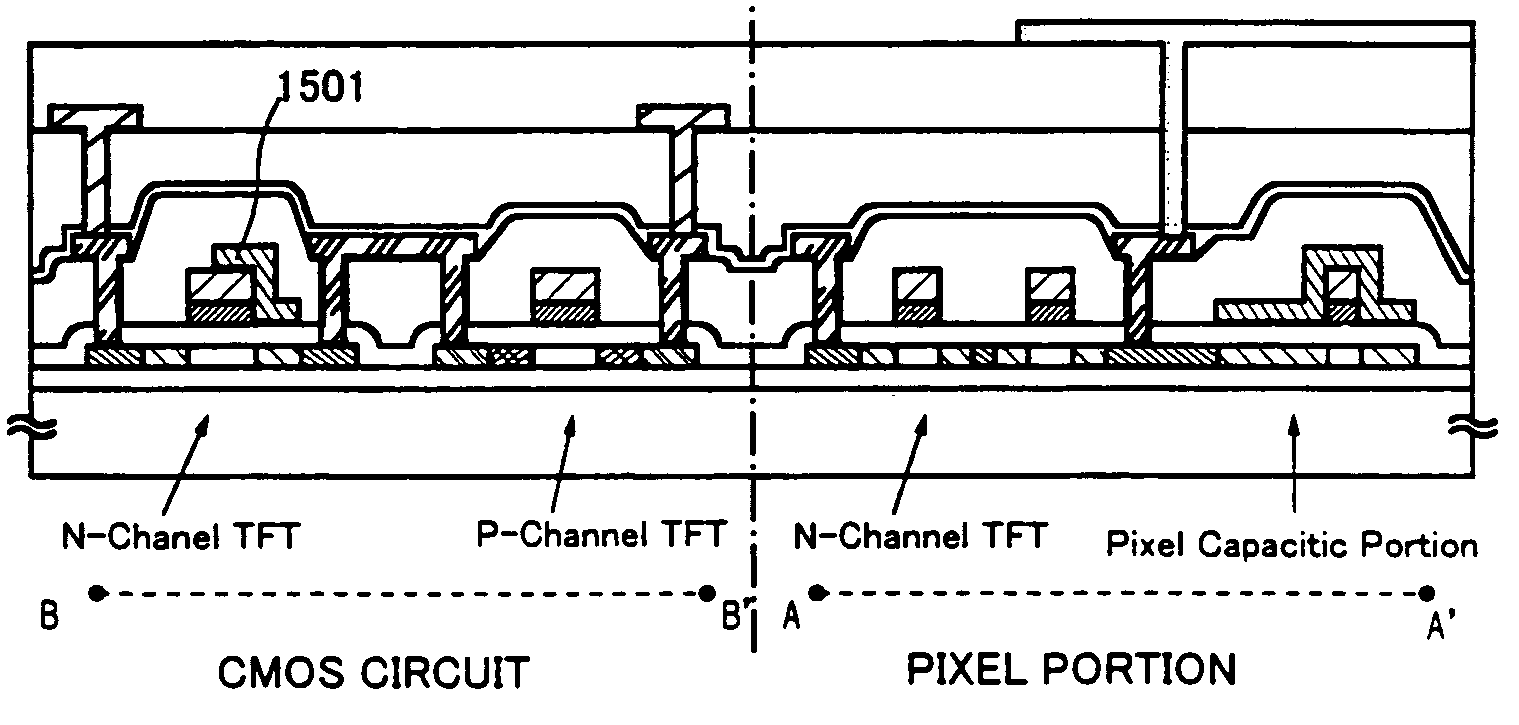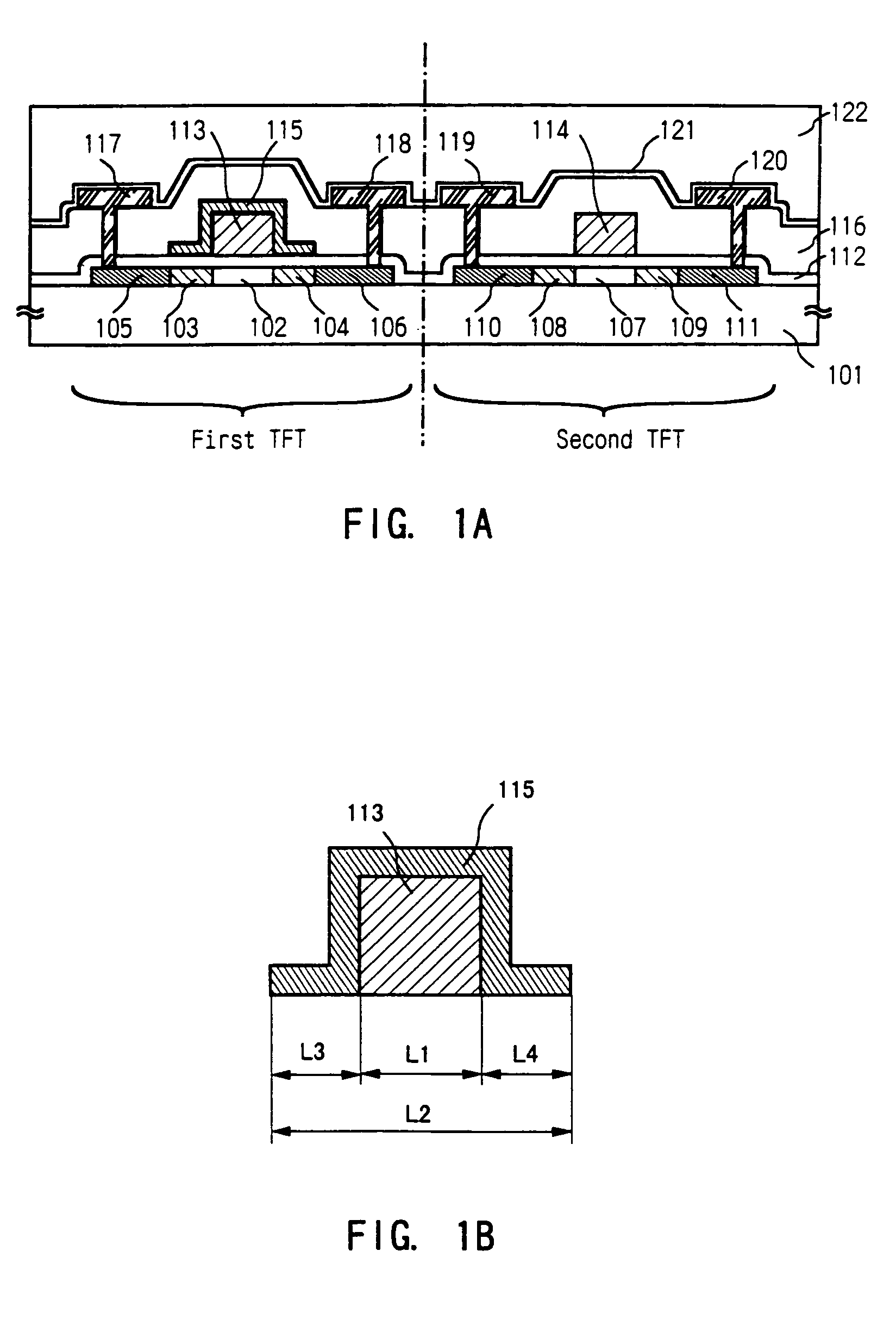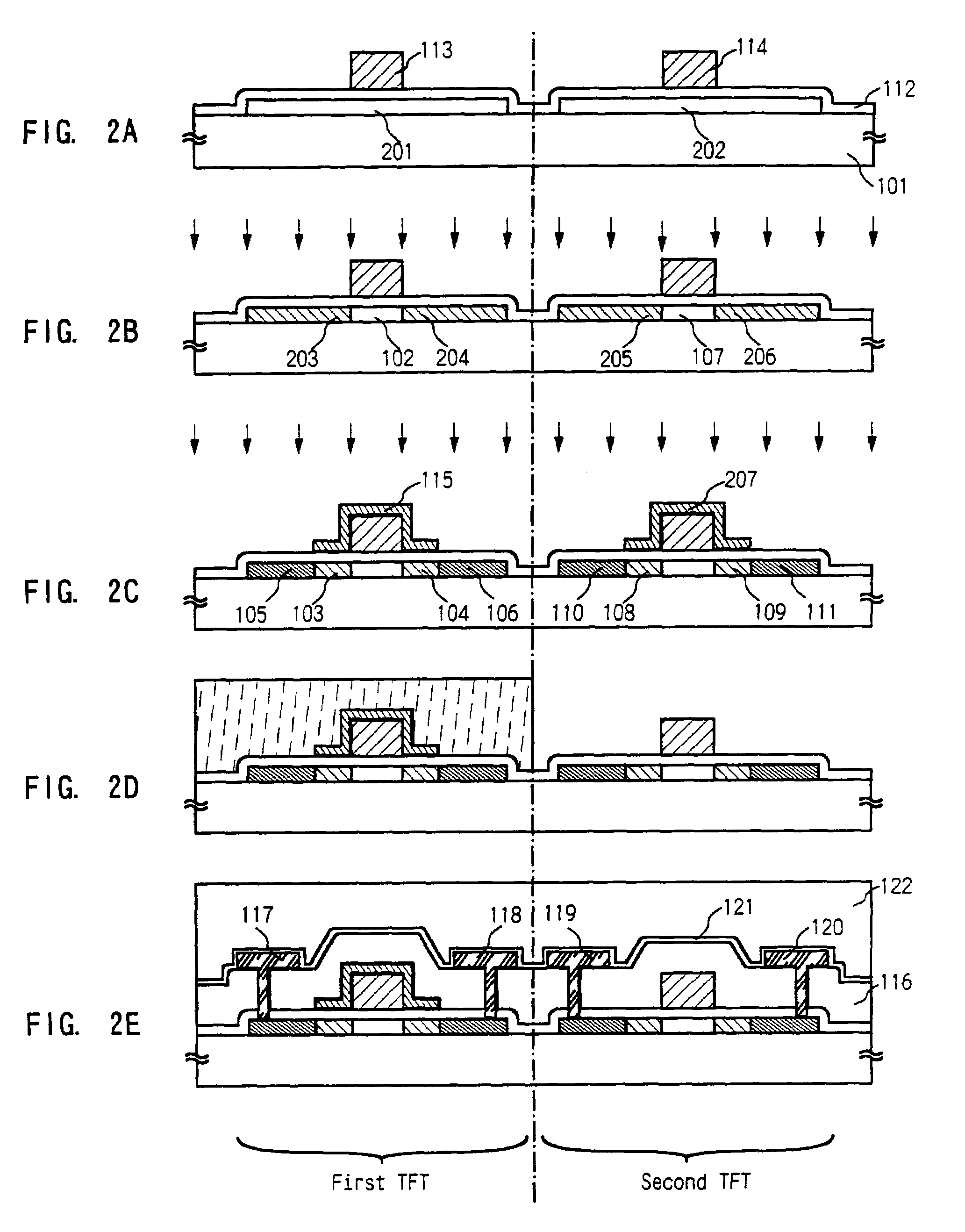Semiconductor device including two transistors and capacitive part
a technology of capacitive parts and semiconductors, applied in the direction of semiconductor devices, electrical devices, transistors, etc., can solve the problems of deterioration of characteristic properties, decrease of mobility and on-current after prolonged operation, and increase of off-current (leakage current) of polysilicon films, etc., to achieve high driving performance and high reliability
- Summary
- Abstract
- Description
- Claims
- Application Information
AI Technical Summary
Benefits of technology
Problems solved by technology
Method used
Image
Examples
embodiment 1
[0080]This embodiment demonstrates the application of the present invention to liquid crystal display units. The process in this embodiment is designed to produce the pixel and the CMOS circuit (as the drive circuit) as shown in FIGS. 3 and 4.
[0081]The substrate 301 was prepared from alkali-free glass typified by 1737 glass from Corning Glass Works. An underlying film 302 of silicon oxide (200 nm thick) was formed on the surface of the substrate 301 on which TFT was to be formed. The underlying film 302 may optionally be coated with silicon nitride film.
[0082]On the underlying film 302 was formed an amorphous silicon film (50 nm thick) by plasma CVD. The amorphous silicon film was heated (preferably at 400–500° C. depending on its hydrogen content) for dehydrogenation so that the hydrogen content was reduced to 5 atomic % or less. The amorphous silicon film was converted into crystalline silicon film by crystallization.
[0083]The process for crystallization may be accomplished by any...
embodiment 2
[0116]This embodiment differs from Embodiment 1 in that the crystalline semiconductor film as the semiconductor layer is formed by thermal crystallization with the aid of a catalytic element. This step should preferably be carried out by using the technology disclosed in Japanese Patent Laid-open No. 130652 / 1995 and 78329 / 1996.
[0117]The technology disclosed in Japanese Patent Laid-open No. 130652 / 1995 was applied to the present invention as shown in FIG. 7. On the silicon substrate 601 was formed sequentially the silicon oxide film 602 and the amorphous silicon film 603. Further, the nickel-containing layer 604 was formed by coating with a nickel acetate solution containing 10 ppm of nickel (by weight). (FIG. 7(A))
[0118]Dehydration at 500° C. for 1 hour and heat treatment at 500–650° C. for 4–12 hours (for example, at 550° C. for 8 hours) were carried out so as to form the crystalline silicon film 605. The resulting crystalline silicon film 605 was superior in crystallinity. (FIG. 7...
embodiment 3
[0125]This embodiment demonstrates the procedure to form the semiconductor layer used in Embodiment 1. In this procedure, an amorphous semiconductor film is formed first and then it is crystallized with the aid of the above-mentioned catalytic element, which is finally removed from the crystalline semiconductor film. The procedure in this embodiment is based on the technology disclosed in Japanese Patent Laid-open No. 135468 / 1998 and 135469 / 1998.
[0126]This technology is concerned with the removal of the catalytic element (used for crystallization of the amorphous semiconductor film) by gettering after crystallization. This technology makes it possible to reduce the concentration of the catalytic element in the crystalline semiconductor film down to 1×1017 atms / cm3, preferably 1×1016 atms / cm3.
[0127]This embodiment is explained with reference to FIG. 9. The substrate is alkali-free glass typified by 1737 glass from Corning Glass Works. FIG. 9(A) shows the underlying film 802 and the c...
PUM
 Login to View More
Login to View More Abstract
Description
Claims
Application Information
 Login to View More
Login to View More - R&D
- Intellectual Property
- Life Sciences
- Materials
- Tech Scout
- Unparalleled Data Quality
- Higher Quality Content
- 60% Fewer Hallucinations
Browse by: Latest US Patents, China's latest patents, Technical Efficacy Thesaurus, Application Domain, Technology Topic, Popular Technical Reports.
© 2025 PatSnap. All rights reserved.Legal|Privacy policy|Modern Slavery Act Transparency Statement|Sitemap|About US| Contact US: help@patsnap.com



